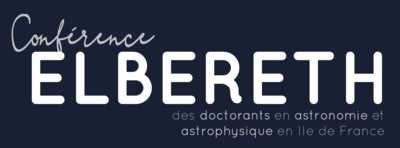Orateur
Description
The success of the CoRoT and Kepler space-borne missions has opened a new era for stellar phys-ics. Indeed, thanks to the long four-year time series of Kepler, it is now possible to decipher in detail the oscillation spectrum of evolved giants. The information contained in these oscillation spectra, which has never been precisely studied so far for evolved red-giant branch (RGB) and asymptotic-giant branch (AGB) stars, is of major importance to probe the inner stellar structure, which is poorly probed only with spectroscopy. Here we show that seismology can be used to disentangle AGB from RGB stars, opening new prospects for precise stellar physics.
In this context, we considered the acoustic modes that develop in stellar interiors and we performed a thorough analysis of the oscillation spectra of ~ 2.000 evolved giants, including RGB and AGB stars. We could extract their oscillation mode properties (i.e. frequencies, amplitudes, widths) and infer the asteroseismic constraints by using a model based on the asymptotic pressure-mode pattern of red giants. My presentation will be focused on the physical differences between RGB and AGB stars involving the second helium ionisation zone (HeII), which is a region that exhibits a strong gradient in the first adiabatic exponent profile. First, I will highlight the significant differences we find in the typical signature of HeII in mode frequencies. Then, I will illustrate the prospects of constraining stellar models of evolved RGB and AGB stars with seismic observations using the stellar evolution code MESA and the oscillation code ADIPLS. This will allow us to address the physical conditions inside those stars and to distinguish them, hence enhance our understanding of stellar evolution.
| Field | Solar & Stellar Physics |
|---|

